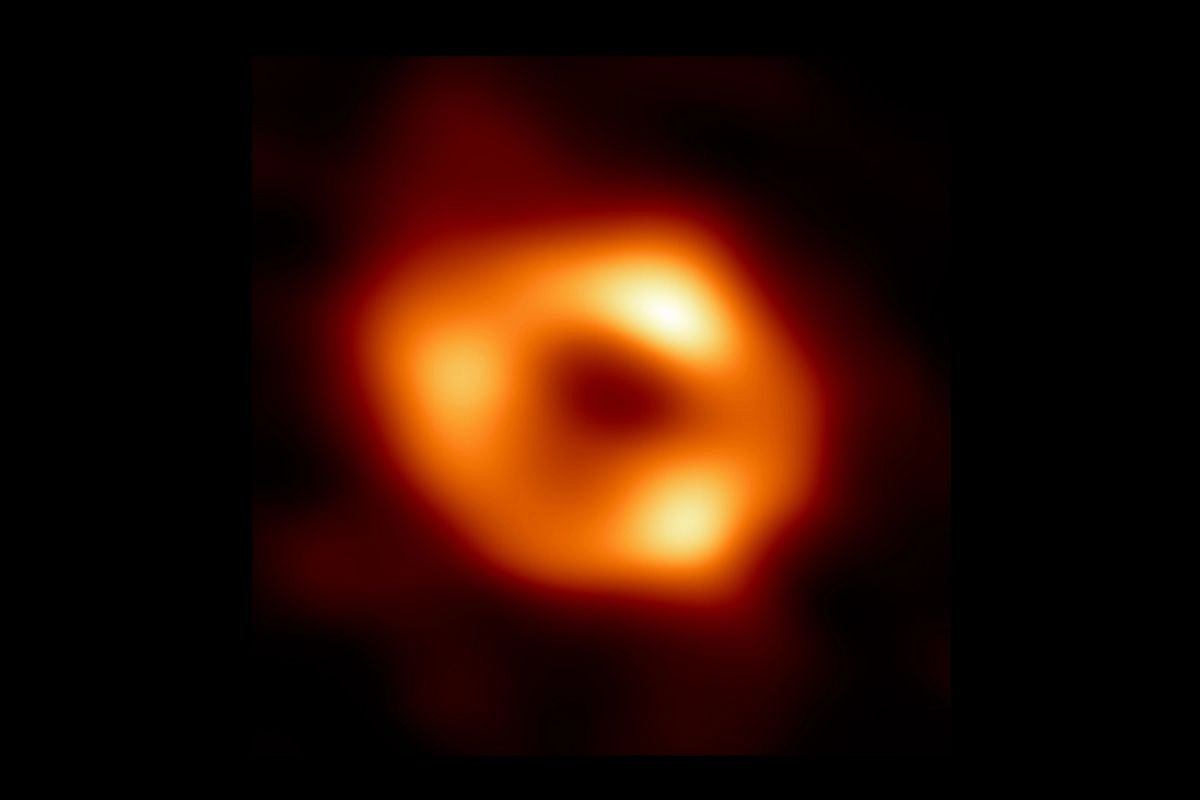Science
First Ever Image Of The Black Hole At The Heart Of Milky Way Galaxy
- The mystery has been solved on 12 May 2022; the first picture of the black hole has been released by 'Event Horizon Telescope' Collaboration - an international working group of astronomers who have networked a series of arrays of telescopes across the planet.

Black Hole at the Centre of our Milky Way Galaxy.
A networked team of astronomers from across the planet published on 12 May what is the very first image of the black hole at the centre of our Milky Way Galaxy. The galactic centre is a source of radio emission named Sagittarius A star (abbreviated as Sgr A*). It is about 27,000 light years. Galactic centre has been a mystery for quite some time. Many astrophysicists have proposed that the centre of Milky Way may be having a black hole.
That mystery has been solved on 12-May-2022. The first picture of the black hole has been released by 'Event Horizon Telescope' (EHT) Collaboration - an international working group of astronomers who have networked a series of arrays of telescopes across the planet. Such a network has created what is considered as 'a single "Earth-sized" virtual telescope.'
This is the second black hole of the galactic centre that the EHT group has taken. The first one was in 2019. It was the image of M87* black hole, at the centre of another galaxy Messier 87 galaxy which is about 55 million light years away from us. The black hole at the centre of our galaxy is much smaller than the M87*. According to ETH though both the galaxies and also the black holes at their centres are different in terms of sizes, 'close to the edge of these black holes they look amazingly similar'.
This again shows how well the general theory of relativity works.
Interestingly, an year after Einstein came up with General Theory of Relativity, in 1916 came the famous Schwarzschild solution describing a non-rotating, spherical black hole. Einstein was not much enthusiastic about black holes.
Then in 1955, the year Einstein died, a young budding theoretical physicist from India came with the equation. Now famous and fundamental for black hole research community, the Raychaudhuri equation by Amal Kumar Raychaudhuri (1923-2005), would bring in singularity and would later provide the basis for the work of Stephen Hawking and Penrose, of whom Penrose would receive Nobel Prize in 2020.
Chandrasekhar is not the only Indian name associated with pioneering blackhole research. Unfortunately, self-effacing Raychaudhuri, for whom teaching and theoretical researches were passion, is not well known outside the community of black hole researchers.
Perhaps this momentous occasion of a global workforce of physicists obtaining the image of the black hole at the galactic centre of our Milky Way, the Government of India should honour the memory of this great physicist by awarding him posthumously the highest or the second highest civilian award of India.
Global Knowledge Collaboration
The webpage of the EHT group website announcing the discovery informs us this:
While in the case of LIGO in 2016 Modi government okayed a joint operated observatory in Maharashtra with 220 hectares of land, another important science project Neutrino Observatory has run into trouble with the Dravidianist Luddite government in Tamil Nadu.
In this age of trans-national mega science projects uniting people across nations and continents in seeking knowledge, that such projects become victims to anti-science politics in India is a sad reality.
Support Swarajya's 50 Ground Reports Project & Sponsor A Story
Every general election Swarajya does a 50 ground reports project.
Aimed only at serious readers and those who appreciate the nuances of political undercurrents, the project provides a sense of India's electoral landscape. As you know, these reports are produced after considerable investment of travel, time and effort on the ground.
This time too we've kicked off the project in style and have covered over 30 constituencies already. If you're someone who appreciates such work and have enjoyed our coverage please consider sponsoring a ground report for just Rs 2999 to Rs 19,999 - it goes a long way in helping us produce more quality reportage.
You can also back this project by becoming a subscriber for as little as Rs 999 - so do click on this links and choose a plan that suits you and back us.
Click below to contribute.
Latest